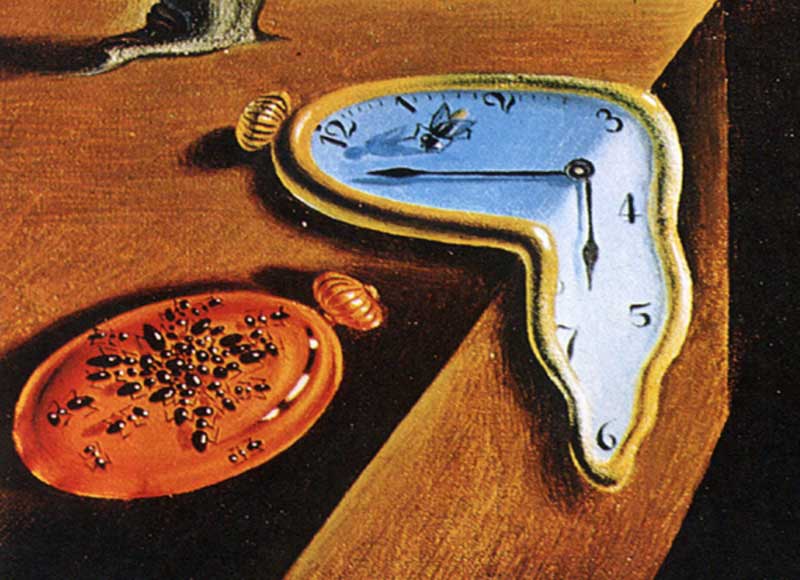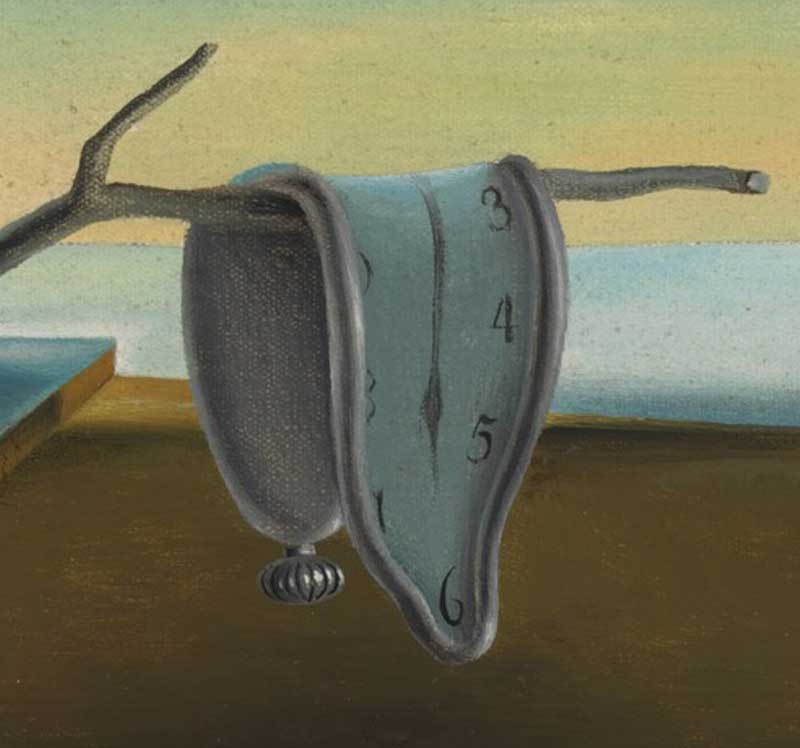
Often defined by critics with more descriptive titles like The Melting Clocks, The Soft Watches or The Melting Watches, The Persistence of Memory, painted by Salvador Dali in 1931, is undoubtedly one of the most recognizable works of Surrealism.
The Persistence of Memory is one of the earlier Surrealist works of the artist, considered to be very much influenced by the Dutch painter Hieronymus Bosch's Garden of Earthly Delights, which he combined with a Catalan background. He also used his personal paranoid-critical approach in it and depicted his psychological conflicts and phobias. The faithful transcription of dreams has always played a major role in Dali’s works. He used the elements of disparate appearance of the dreams with absolute realism, emphasising the actual character of each one of them, making a photocopy of a document, a photograph or the actual object, as well as using an appropriate collage.
The Persistence of Memory depicts the surrealistic vision of an uncanny, a strange landscape to life, reproduced with unnerving accuracy. The painting exhibits a light blue horizon slowly fading downward from blue to yellow across the top quarter and under the skyline lies a body of water, probably a large lake or a reflecting pool. The water body follows the skyline until it meets the neighbouring mountains to the right, in front of which there is a solitary pebble.

The left side of the canvas depicts a blue, rectangular platform with dark brown trimming around the edges, close to the waterfront, with another pebble in front of it.
There is also the structure of a dry, lifeless tree, located on the top of a light brown square platform, taller than the other one, at the left bottom corner of the canvas. The dry tree is devoid of leaves and has only one branch, on which hangs a silver pocket watch, like laundry left on the line hung out to dry and appears to be melting, showing the numbers three to nine with one of the hands of the watch pointing to six. There are two more pocket watches on the taller platform. One of them, the golden one, is hanging halfway off the brown platform and is melted and its hands stopped at five of seven and there is a fly on the face near the number one. The other pocket watch, made of bronze, is shut, not melted like the others and its cover is full with a swarm of black ants. The dark brown ground of the canvas contains a white, humanlike figure on its right side. The figure, with overemphasised large eyelashes and flared nose and small brown object coming out of the right nostril, has another silver-coloured melting clock on its back. However, the white figure does not have any human limbs and besides the figure, the rest of the canvas is dark and barren.

Many paintings of Salvador Dali were inspired by the landscapes of Catalonia, where he spent a slice of his life with Gala, his muse.
The rugged rocks to the right of the canvas, depicting the Persistence of Memory, represent a tip of the Cap de Creus peninsula in northeastern Catalonia, while the curious and apprehensive shadow in the foreground of the painting is a reference to Mount Pan. The colour scheme used in the painting is not vivid or bright, but more saturated and dark, which is derived from the atmosphere of Cadaques, where the light, due to the colour of the sky and the sea, seems to suspend the course of time and space and allows the mind through the eye to glide more easily from one point to another. While the mountains in the background look narrow, ancient, dangerous, with noticeable signs of erosion, the ants crawling over the pocket watch suggest decoy, used as a symbol of decay.

The Persistence of Memory is said to be Salvador Dali’s iconic ode to time, as the dripping clocks reflect his subconscious and convey the simple theme that time, which we know, is meaningless. The painting suggests that the concept of time had lost all meaning in the unconscious world. The melting watches are an unconscious symbol of the relativity of space and time, incorporating Albert Einstein’s theory of relativity regarding the relationship between space and time. The pocket watches are the important keys to discovering the inner meaning of the painting. The silver watch on the tree is symbolic of the recent past and the gold watch represents the best years of life slowly escaping. While the closed bronze watch with the ants could symbolise a time, which the artist wanted to forget, the one on top of the white figure might be representing the place where he is at now and currently trying to live through.

Perhaps the most confusing part of the scene is the white anthropomorphic object laid on the ground with a melting pocket watch on it, across the centre of the canvas. It seems to be a fading creature that often appears in dreams where the dreamer cannot pinpoint the creature's exact form and composition. Nevertheless, the closed eye with several eyelashes of the figure also suggests that the creature itself is in a state of dream. However, the face-like figure is interpreted by many critics to be a self-portrait of the artist, while the melting watch represents the passing of time experienced in sleep.
The Persistence of Memory, the surreal oil painting created by the famous Spanish artist, Salvador Dali, measures 9 1/2 x 13 inches (24.1 x 33 cm) and is on display at the Museum of Modern Art in New York.
